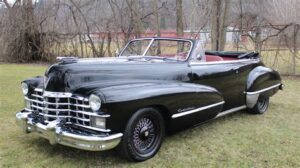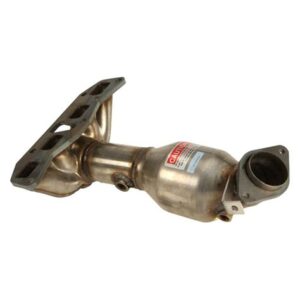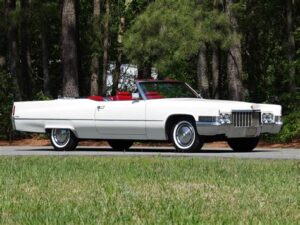Introducing the F150 Cadillac Converter: A Critical Component for Your Truck’s Performance
If you own a Ford F150, you understand the importance of every component that contributes to your vehicle’s performance, particularly the Cadillac converter. This essential part not only helps in reducing harmful emissions but also plays a significant role in the efficiency and power of your truck’s engine. In this article, we’ll delve into the functionality of the F150 Cadillac converter, explore common issues that might arise, and provide you with expert steps for diagnosing and maintaining it. We will also highlight the benefits of upgrading your converter, ensuring that you get the most out of your F150. Whether you’re a seasoned mechanic or a truck enthusiast, our comprehensive guide will equip you with the knowledge needed to keep your vehicle running smoothly and efficiently.
Understanding The F150 Cadillac Converter Functionality
The f150 cadillac converter, commonly referred to as the catalytic converter, plays a vital role in reducing harmful emissions produced by your vehicle’s engine. It does this by converting toxic gases into less harmful substances before they are expelled out of the exhaust system. Here’s a closer look at how it functions:
1. Chemical Reactions: The catalytic converter utilizes chemical reactions involving oxidation and reduction to transform harmful gases. It primarily targets pollutants such as carbon monoxide, hydrocarbons, and nitrogen oxides, breaking them down into carbon dioxide and nitrogen, which are far less harmful.
2. Components: Inside the converter, there are two main types of catalysts: the f150 cadillac converter contains both a reduction catalyst, which helps to convert nitrogen oxides into nitrogen and oxygen, and an oxidation catalyst that aids in converting carbon monoxide and unburned hydrocarbons into carbon dioxide.
3. Flow Dynamics: The design of the f150 cadillac converter allows exhaust gases to flow smoothly through its honeycomb structure, maximizing the surface area that the exhaust gases come into contact with. This enhances the efficiency of the catalytic process.
4. Temperature Sensitivity: Proper operating temperatures are crucial for the catalytic converter to function effectively. When the engine is cold, the converter may not reach optimal temperatures, so emissions can be higher initially until the system warms up.
The f150 cadillac converter is essential for maintaining environmental standards and ensuring your vehicle operates efficiently. Understanding its functionality can help you diagnose issues early and improve your F150’s overall performance.
Common Issues With The F150 Cadillac Converter
The f150 cadillac converter is a crucial component of your vehicle’s exhaust system. However, like any part, it can encounter a variety of issues over time. Here are some of the most common problems associated with the F150 Cadillac converter:
- Clogging: Eventually, the catalyst material inside the converter can break down or become clogged with carbon deposits, leading to reduced exhaust flow and engine performance.
- Damage: Physical damage can occur due to road debris or impact, causing the converter to become inoperable.
- Overheating: Excess fuel entering the exhaust system can cause the converter to overheat, potentially melting the internal components and affecting functionality.
- Poor Fuel Economy: A malfunctioning converter can lead to decreased fuel efficiency as the engine works harder to expel exhaust gases.
- Check Engine Light: An illuminated check engine light often indicates issues with the converter. Error codes related to the converter may require a diagnostic scan to pinpoint the problem.
- Emission Failures: Since the F150 Cadillac converter is responsible for reducing harmful emissions, any issues can lead to failed emissions tests.
Addressing these common issues promptly can help maintain the performance and longevity of your f150 cadillac converter, ensuring your vehicle runs smoothly and efficiently.
Steps To Diagnose Your F150 Cadillac Converter Problems
Diagnosing issues with your f150 cadillac converter can save you from costly repairs and ensure optimal vehicle performance. Follow these systematic steps to identify potential problems:
- Visual Inspection: Begin by inspecting the f150 cadillac converter for any obvious signs of damage. Look for dents, rust, or broken parts that might indicate a malfunction.
- Check Engine Light: If the check engine light is illuminated on your dashboard, use an OBD-II scanner to retrieve the trouble codes. This will provide clues as to whether the f150 cadillac converter is the culprit.
- Exhaust Leak Test: Listen for any hissing or popping sounds around the f150 cadillac converter area, which may indicate an exhaust leak that could affect its efficiency.
- Monitor Engine Performance: Pay attention to changes in your vehicle’s performance. Symptoms like decreased power, poor acceleration, or increased fuel consumption can all signal f150 cadillac converter issues.
- Temperature Check: Using an infrared thermometer, measure the temperature of the f150 cadillac converter. A significant difference in temperature between the inlet and outlet may indicate a blockage.
- Consult a Mechanic: If the earlier steps indicate a possible problem, it’s best to consult a qualified mechanic. They can perform further tests and give you a comprehensive diagnosis of your f150 cadillac converter.
By following these steps, you can effectively diagnose issues with your f150 cadillac converter and take the necessary steps to resolve them.
Benefits Of Upgrading Your F150 Cadillac Converter
Upgrading your f150 cadillac converter can bring a variety of benefits that enhance both performance and efficiency. Here are some key advantages to consider:
1. Improved Exhaust Flow: A high-performance catalytic converter can significantly improve the flow of exhaust gases. This enhancement reduces back pressure, allowing your engine to breathe better and perform more efficiently.
2. Increased Horsepower and Torque: Upgrading your f150 cadillac converter can lead to noticeable gains in horsepower and torque. The combination of better exhaust flow and optimally functioning components allows for increased engine output, translating to a more powerful driving experience.
3. Enhanced Fuel Efficiency: Modern upgraded catalytic converters are designed to be more efficient, which can lead to better fuel economy. With optimal exhaust flow, the engine runs more efficiently, potentially saving you money at the gas pump.
4. Environmentally Friendly: Upgrading to a high-performance catalytic converter can help in reducing harmful emissions. These converters are often designed to meet or exceed environmental regulations, which is beneficial for both your vehicle and the planet.
5. Longevity and Durability: A quality aftermarket catalytic converter is typically built with more durable materials than stock parts. This can result in longer life and reduce the frequency of replacements, saving you money in the long term.
6. Enhanced Sound: A performance catalytic converter can also improve the sound of your exhaust system. Many enthusiasts appreciate the deeper, more aggressive sound that comes from a high-flow converter, adding a layer of enjoyment to the driving experience.
Upgrading your f150 cadillac converter not only boosts performance but also contributes to durability, fuel efficiency, and environmental responsibility. Always ensure that you choose a converter that fits your vehicle’s specific requirements and emissions standards for optimal results.
How To Maintain Your F150 Cadillac Converter Efficiency
To ensure optimal performance and longevity of your f150 cadillac converter, regular maintenance is essential. Here are some key practices to keep your converter functioning efficiently:
Maintaining your f150 cadillac converter not only maximizes its efficiency but can also prevent costly repairs down the line. By incorporating these maintenance tips, you’ll help prolong the life of your converter and improve your vehicle’s overall performance.
Frequently Asked Questions
What is a Cadillac converter and why is it important for the F150?
A Cadillac converter, or catalytic converter, is an essential component of the F150’s exhaust system that helps reduce harmful emissions. It converts toxic gases from the engine into less harmful substances before they exit into the atmosphere.
How do I know when it’s time to replace the Cadillac converter on my F150?
Signs that you need to replace the Cadillac converter include a check engine light, decreased fuel efficiency, unusual exhaust odors, or if your vehicle is failing emissions tests.
Can I legally drive my F150 without a Cadillac converter?
No, it is illegal to drive a vehicle without a functional Cadillac converter in many jurisdictions due to emissions regulations. Driving without one can also lead to hefty fines.
What are the common causes of Cadillac converter failure in F150 trucks?
Common causes of Cadillac converter failure include overheating, engine misfires, oil contamination, and physical damage from road debris.
How much does it typically cost to replace the Cadillac converter on an F150?
The cost of replacing a Cadillac converter on an F150 can vary widely, typically ranging from $1,000 to $3,000 including parts and labor depending on the model year and labor rates in your area.
Is there a way to improve the lifespan of my F150’s Cadillac converter?
Yes, regular vehicle maintenance, including proper oil changes, addressing engine issues promptly, and ensuring the exhaust system is in good condition, can help prolong the lifespan of your Cadillac converter.
Are aftermarket Cadillac converters a good option for my F150?
Aftermarket Cadillac converters can be a cost-effective alternative to OEM parts, but it’s crucial to choose a high-quality converter that meets emission standards to ensure your vehicle remains compliant with regulations.





